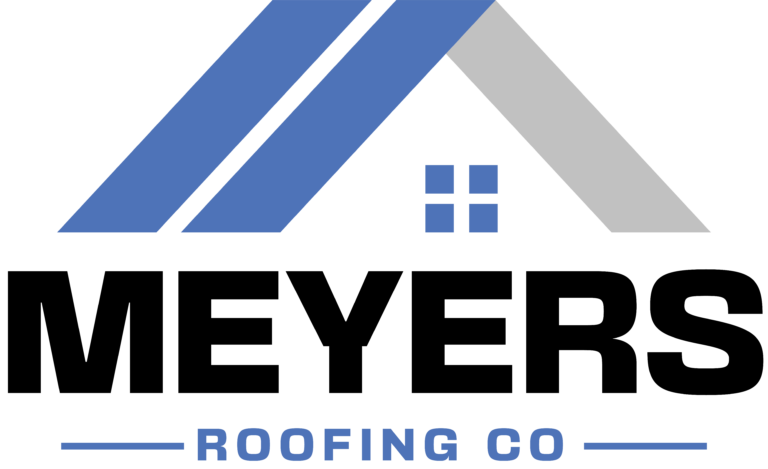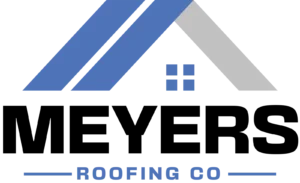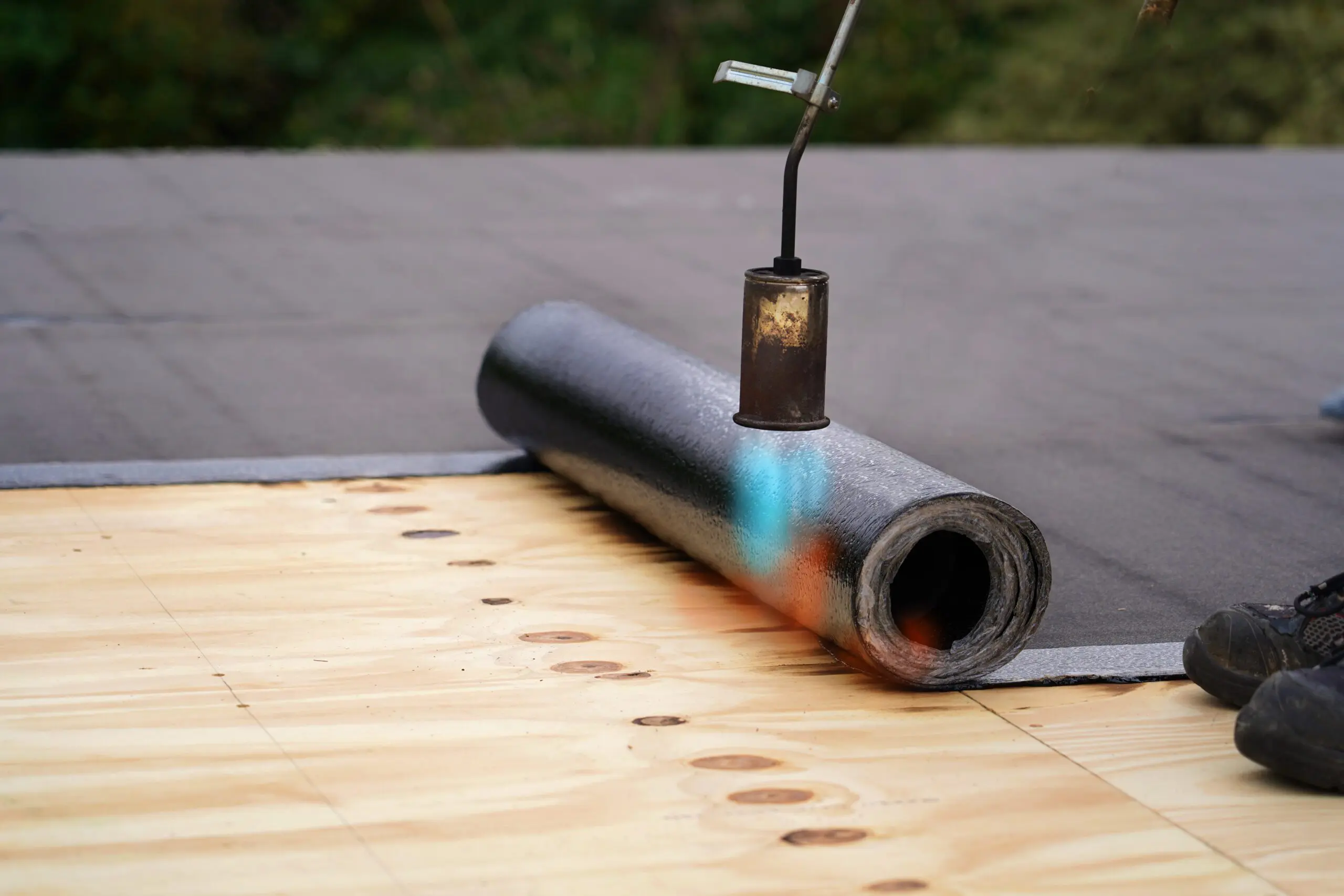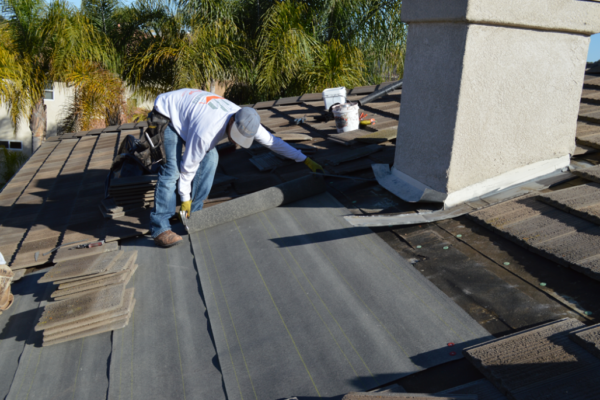Meyers Roofing Co. The Ultimate Guide to Torch Down Roofing
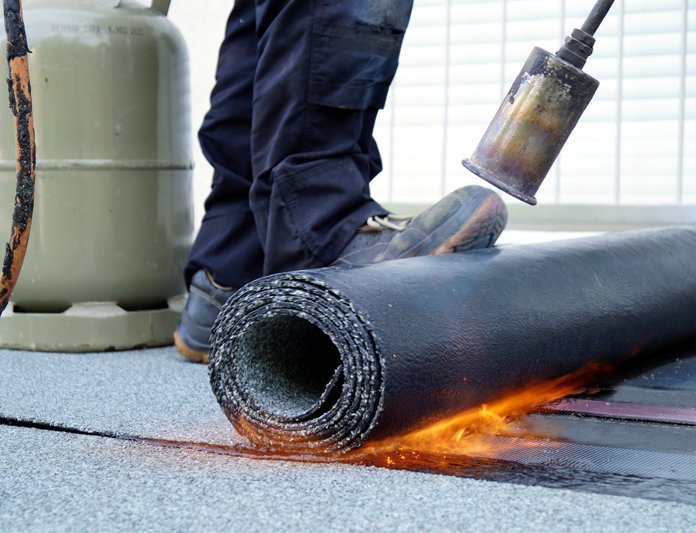
Torch down roofing, sometimes referred to as “torch on” roofing, gets its name from the installation process, which requires an open-flame propane torch. During installation, sheets of modified bitumen are rolled out onto the roof, and a roofing professional uses a hand-held propane torch to heat and adhere the material to the surface. The layers are then melted together at the seams to create a waterproof seal.
Torch Down Roofing Materials
The layers of a torch down roof are made from an asphalt compound called bitumen, modified with either rubber or plastic. This modification allows the material to expand and contract without melting or cracking, making it highly tolerant to the seasonal temperature changes on the roof. There are two main types of torch down roofing systems: two-layer and three-layer systems.
Types of Modified Bitumen
- Atactic Polypropylene (APP): A form of plastic that makes the roofing membranes flexible and responsive to temperature changes.
- Styrene Butadiene Styrene (SBS): A form of rubber that also makes the bitumen flexible, with a lower melting point than APP. SBS membranes can be installed by torch application, self-adhered, cold-processed, or applied with a mop.
A mat of fiberglass, polyester, or other material often forms the sturdy core for torch down roofing membranes. Manufacturers may also embed granules into the top layer to add fire resistance, color options, UV protection, or other distinctive characteristics.
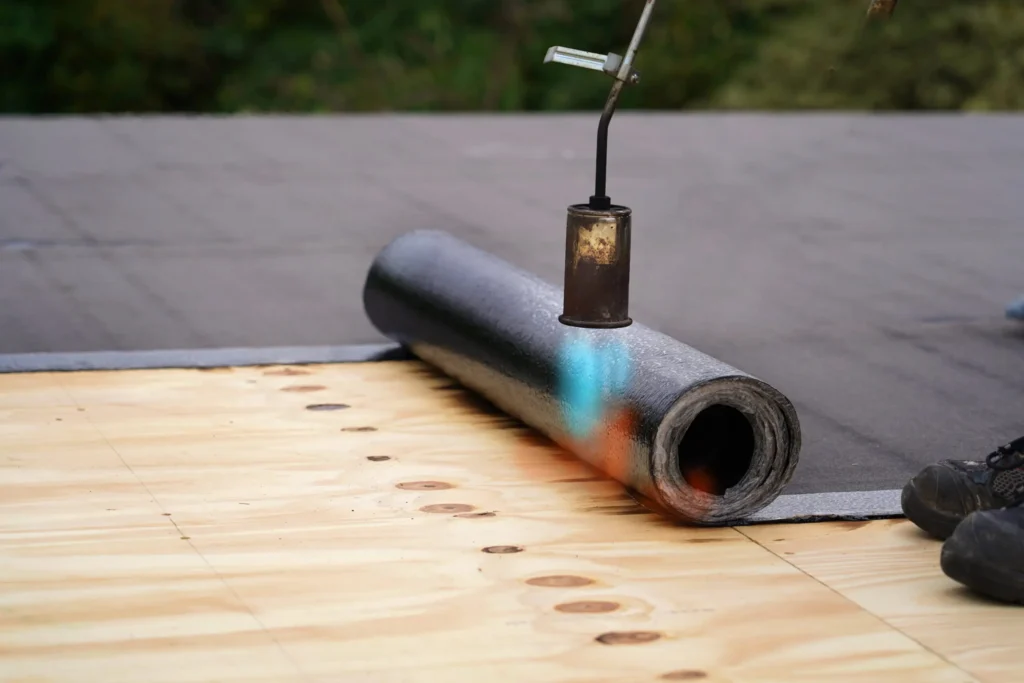
Components of Torch Down Roofing Systems
- Insulation: Applied first to retain heat, especially in cold climates.
- Vapor Barrier: Prevents condensation and moisture issues.
- Overlay Board: Supports the torch down roofing membrane and prevents water ponding.
- Base Sheet: The first layer of the modified bitumen membrane, secured by heat fusing, hot mopping, or adhesive.
- Cap Sheet: The top membrane layer, sealed to the base sheet with a torch.
- Flashing for Penetrations: Self-adhering modified bitumen membrane around roof penetrations, with metal flashing for added protection.
Advantages of Torch Down Roofing
Torch down roofing offers excellent water resistance, durability, and adaptability to various climates, including those with frequent snow. Its ability to expand and contract without damage gives it a long lifespan. The cap sheet provides UV resistance and helps keep the building cool and energy-efficient. Repairs are relatively simple, involving the addition of modified bitumen membrane patches.
Ideal Applications for Torch Down Roofing
Torch down roofing is best suited for slightly pitched roofs with a pitch between ¼:12 to 1:12, where durability and weather resistance are essential. It is especially effective in snowy climates. For completely flat roofs, other roofing options may be more suitable.
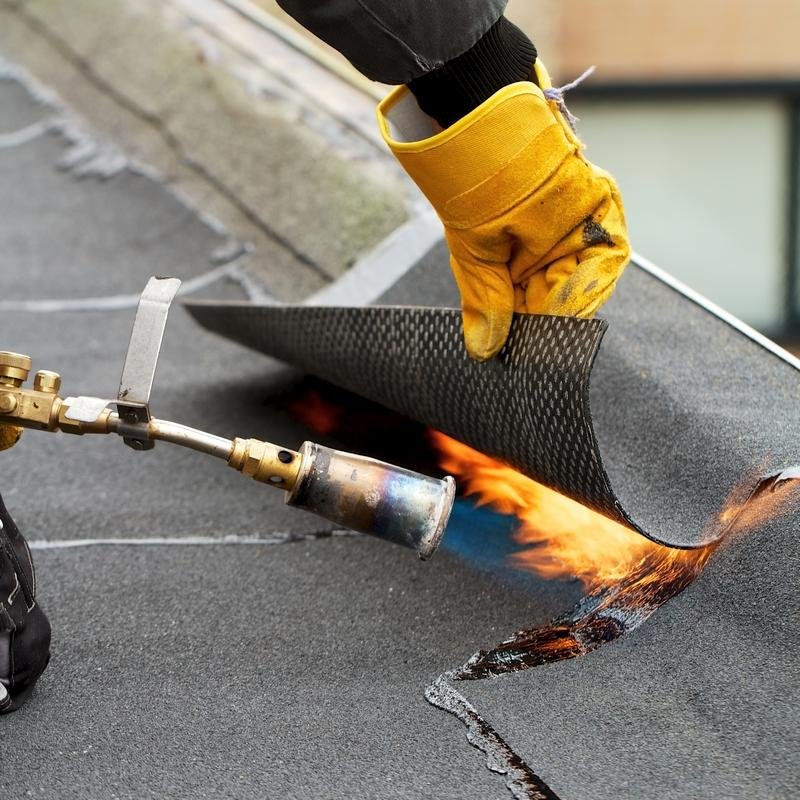
FAQs
- What is another name for torch down roofing? Torch down roofing is also known as “torch on” roofing and sometimes referred to as a “rubberoid” roof.
- Is torch down roofing good? Yes, torch down roofing is water-resistant, suitable for all climates, and easy to repair. It is best for slightly pitched roofs.
- How long do torched roofs last? Torch down roofing has a long lifespan, designed to withstand extreme temperatures and weather conditions.
- What is the average torch down roof cost? Torch down roofing typically costs less than other roofing options and requires less maintenance, reducing long-term costs.
- What is the best torch down roofing material? Torch down roofing is made from modified bitumen, with APP and SBS being common polymers. SBS modified bitumen has a lower melting point and can be installed by various methods.
- Can you install a torch down roof in winter? Yes, but specific cold weather instructions must be followed as outlined in the installation manual.
For more information on torch down roofing or to find a qualified contractor in your area, visit Meyers Roofing Company.
